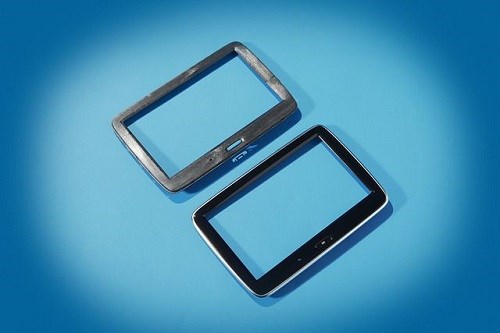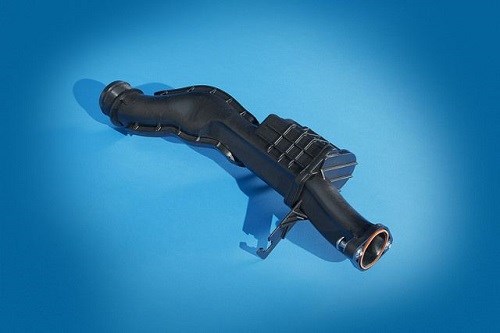SPE Auto Awards Innovations In Safety, Environmental, Process, Power Train
Check out these interesting 2014 SPE Automotive Innovation Awards' finalists in the safety, environmental, process/assembly, power train areas.
Having had the honor to be one of the Blue Ribbon judges of the 2014 SPE Automotive Innovation Awards, I thoroughly enjoyed the process of up-close presentations of such a broad variety of innovations. In this month’s issue, I reported on the award winners of each of the eight categories. Since I saw that nearly all other finalists’ innovations were newsworthy, I followed up with a series of blogs covering the categories of interior, exterior, materials, and chassis/hardware. Take a look at these four attention-grabbing innovations in the safety, environmental, process/assembly, and power train—all of which are transferable to other vehicles.
• Safety—Blind Spot Information System Tail Lamp: Featured in Ford’s F-150 pickup, this week’s announced winner of the 2015 North American Automotive Show for this vehicle category, this innovation is injection molded by Flex-N-Gate using Arkema’s V826, 1803/1808/18304 polymethyl methacrylate (PMMA). This, has been uniquely integrated into the rear blind-spot information system (BLIS) sensor rail-lamp assembly because the vehicle’s aluminum bumper does not permit normal installation behind the plastic fascia. The radar unit is housed behind two layers of plastic on a three-color, three-shot tail-lamp lens and features a cast-aluminum serviceable door, which also acts as a heat sink. In order to have the red opaque and clear material as one layer, the red opaque is the first shot in the molding process, followed by the clear over the red as the second shot which forms the backup window in the module area. By installing the BLIS system in the tail lamp, the lens cover also protects the module from direct impact, water, mud, or snow and the system saves $10 USD/vehicle. By having it designed this way, vs the initial design which was to have the module installed below the lamp, the following components were not needed: bracket, plastic cover, three fasteners; two gary ball attachments and unique D-Pillar.

• Environmental—Lightweight Material with Unique Synthetic & Bio-Fillers: This is featured on the 2015 Ford Mustang and injection molded by Tribar Manufacturing using the specialty TAP01 TPO from Amplas Compounding. The innovation entails the use of a unique synthetic mineral-based fiber plus a bio-filler (coconut powder) that replaces talc and PP plus rubber from recycle battery cases, and which provides a 5% density and 33% wall-thickness reduction in a rear decklid applique bracket and side-door cladding without sacrifice of properties. In addition, the material provides a 30% reduction in injection-molding cycle time and a 15% material cost reduction.

• Process/Assembly—High-Gloss Entertainment System Bezel: Featured in the 2013 Daimler Mercedes-Benz S-Class luxury sedan, this is produced by Johnson Controls and Trexel using Bayer MaterialScience T65 XF ABS/PC injection molded with Mucell foaming. This injection-molded frame for a DVD video bezel had to provide high dimensional stability, reduce warpage, lower weight and cost, and achieve a high-gloss Class A surface finish. Replacing an earlier two-part design featuring multi-layer painting, this single-piece part met all performance requirements thanks to the combination of two process technologies: microcellular foaming and tool heating/cooling. This led to a 40% weight savings and a 20% cost savings along with an additional 10% product cost savings while improving global quality perceptions due to excellent appearance and lower NVH--noise/vibration/harshness.

• Power Train—Charge Air Cooler Duct and Resonator: This is featured on the 2014 Fiat Chrysler Jeep Cherokee SUB and injection molded by Hutchinson FTS using Stanyl Diablo OCD2100 Nylon 4/6 from DSM Engineering Plastics. The DSM super-stabilized nylon 4/6 grade is used to mold a combination hot-side charge air cooler duct plus resonator in a unique shape that accommodates a difficult packaging environment. Doing so, eliminates one sub-component, delivering corrosion-free performance for longer life, and improved captive screw retention. Moreover, it enables improved seal design and retention, reduces weight by 32% and cost by 42% vs. its metal predecessor. It also allows the resonator to be incorporated as an insert for easier acoustic tuning and flexibility to use the same part in a similar package with different acoustic requirements.

Related Content
Fundamentals of Polyethylene – Part 3: Field Failures
Polyethylene parts can fail when an inappropriate density is selected. Let’s look at some examples and examine what happened and why.
Read MorePrices of PE, PP, PS, PVC Drop
Generally, a bottoming-out appears to be the projected pricing trajectory.
Read MoreFundamentals of Polyethylene – Part 5: Metallocenes
How the development of new catalysts—notably metallocenes—paved the way for the development of material grades never before possible.
Read MoreMelt Flow Rate Testing–Part 1
Though often criticized, MFR is a very good gauge of the relative average molecular weight of the polymer. Since molecular weight (MW) is the driving force behind performance in polymers, it turns out to be a very useful number.
Read MoreRead Next
Troubleshooting Screw and Barrel Wear in Extrusion
Extruder screws and barrels will wear over time. If you are seeing a reduction in specific rate and higher discharge temperatures, wear is the likely culprit.
Read MoreUnderstanding Melting in Single-Screw Extruders
You can better visualize the melting process by “flipping” the observation point so that the barrel appears to be turning clockwise around a stationary screw.
Read MoreHow Polymer Melts in Single-Screw Extruders
Understanding how polymer melts in a single-screw extruder could help you optimize your screw design to eliminate defect-causing solid polymer fragments.
Read More


























